Full text
PDF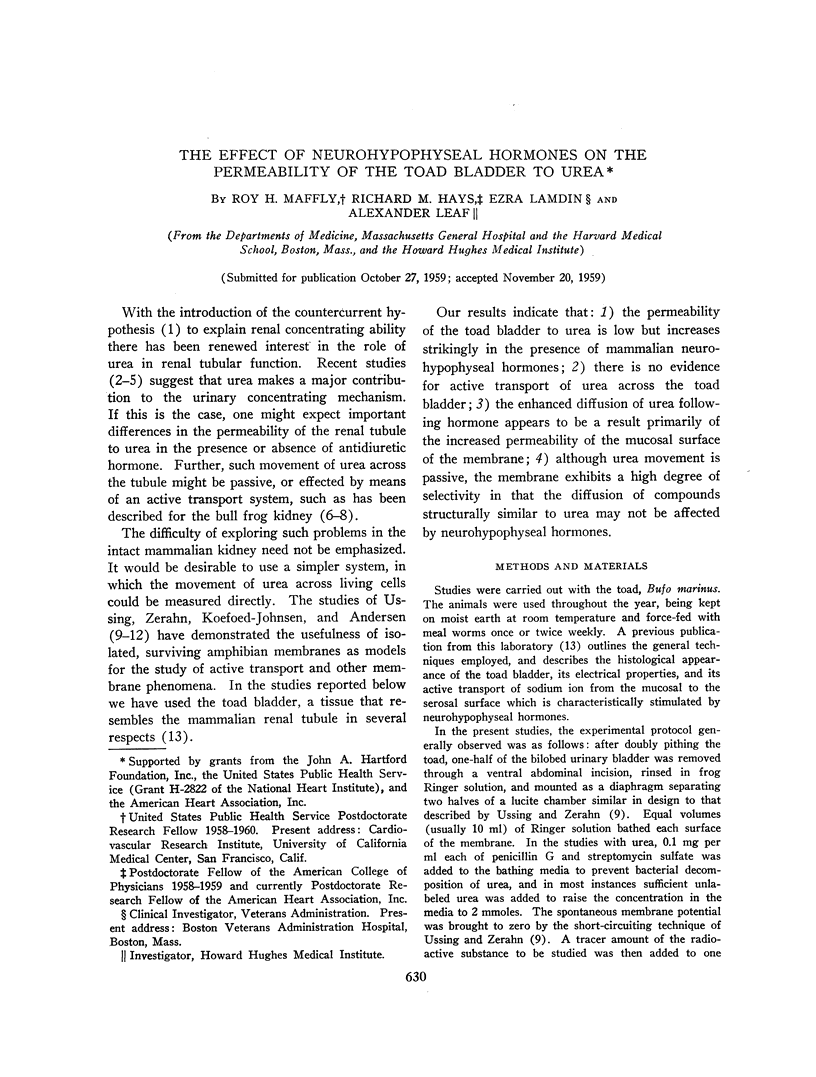
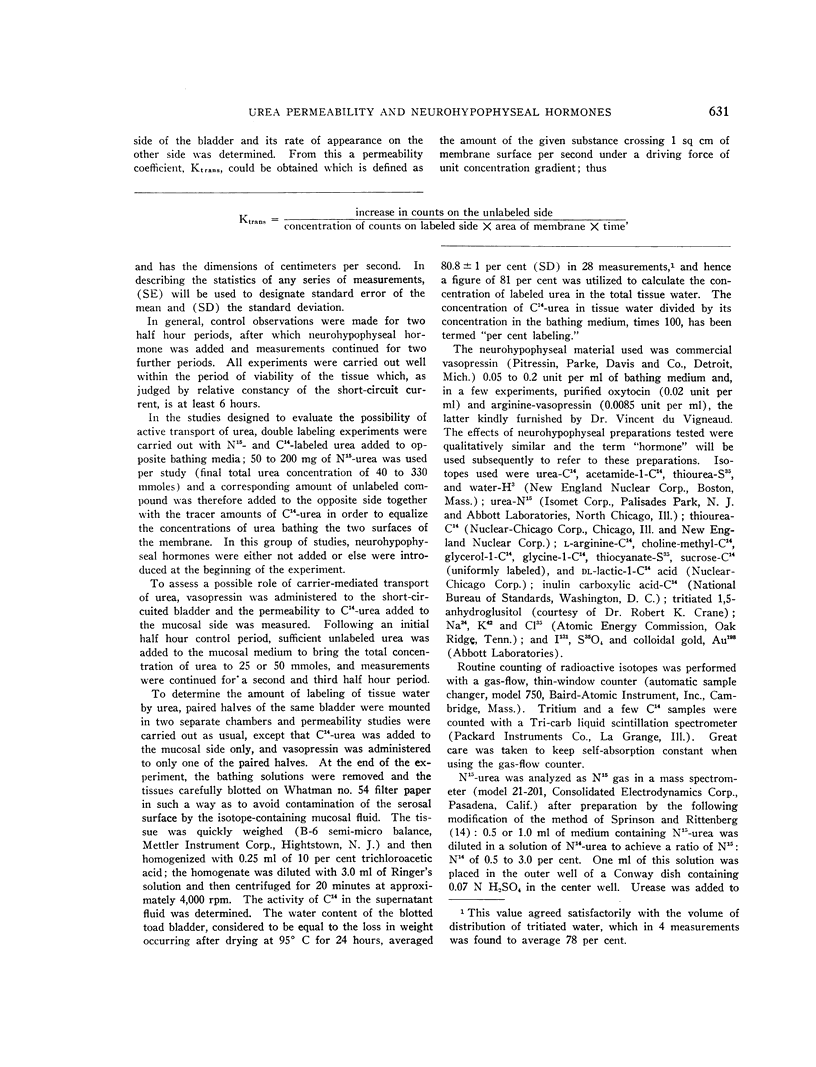
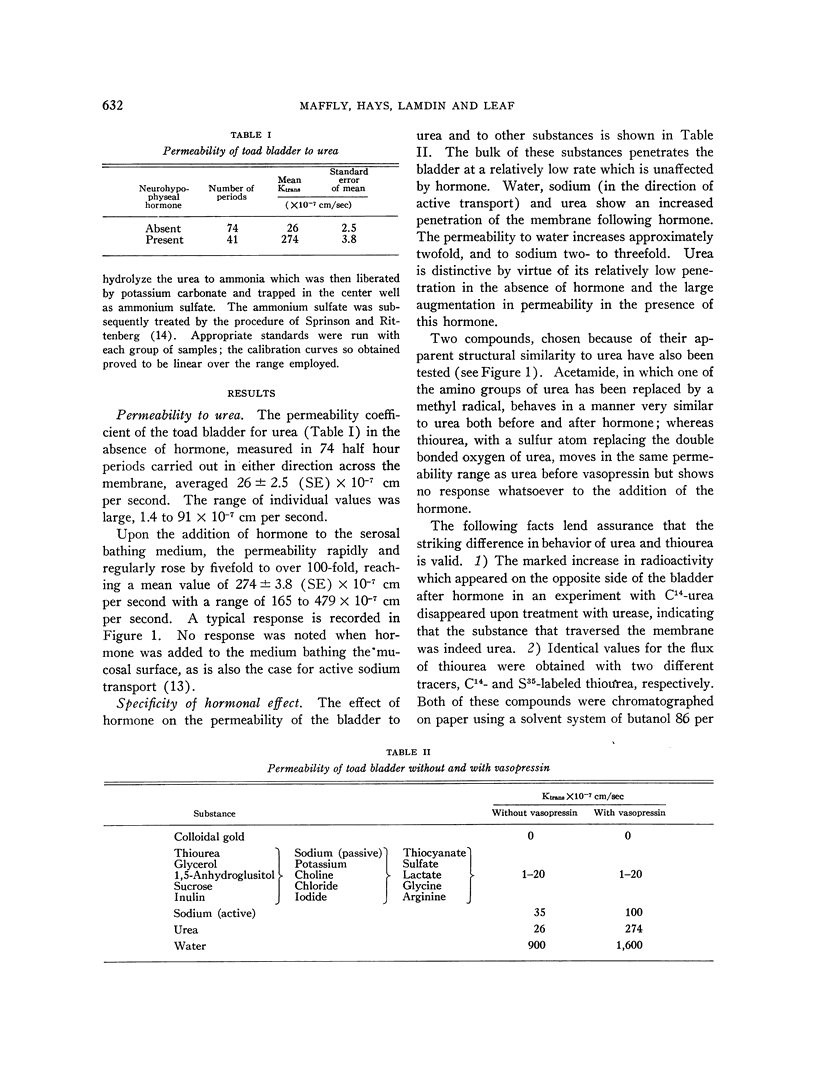
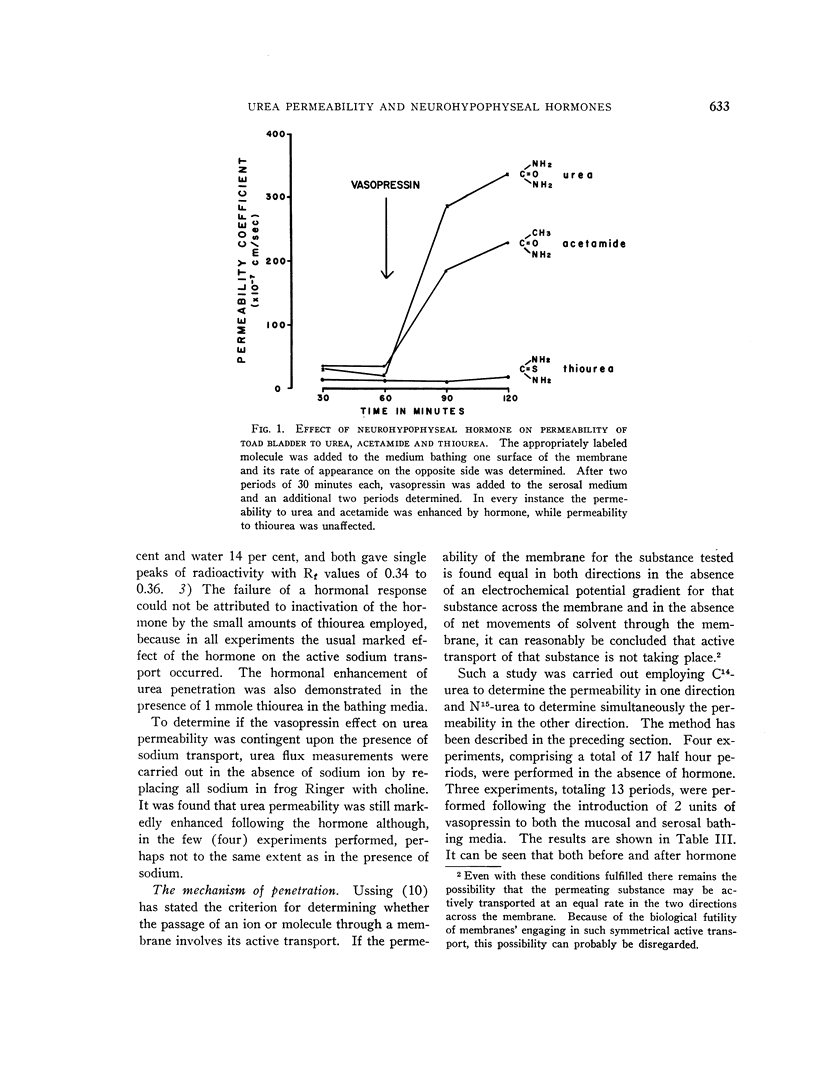
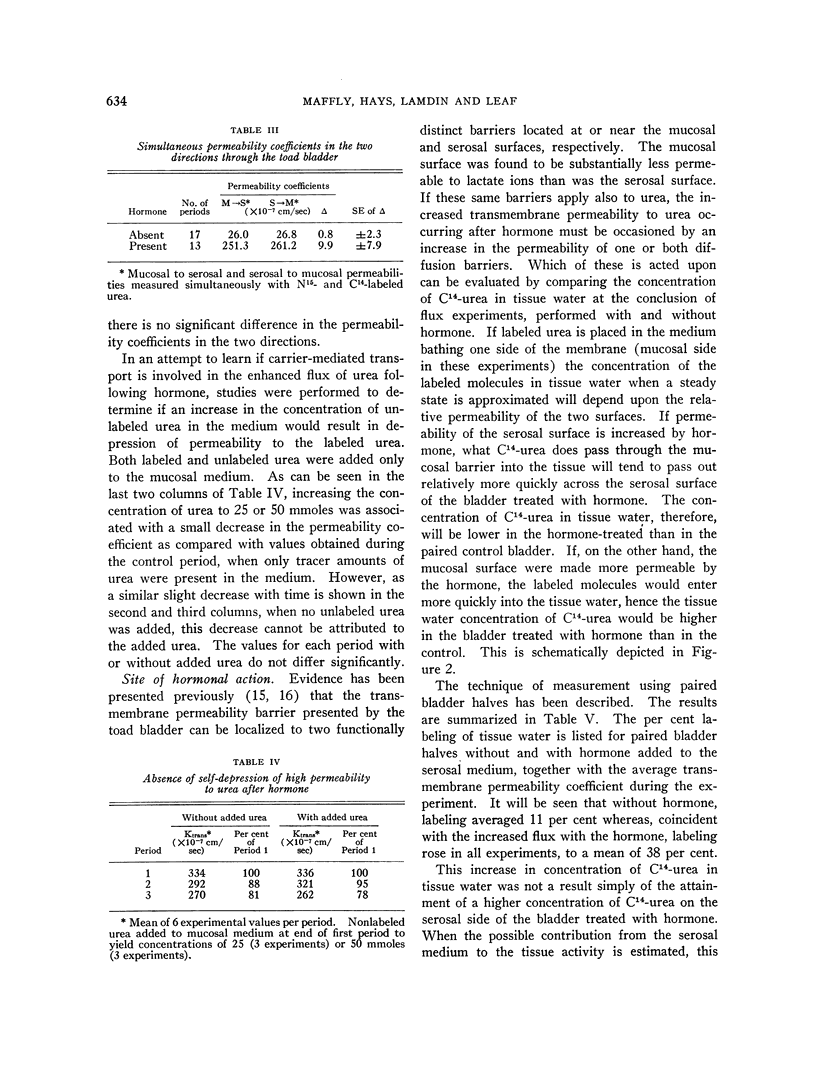
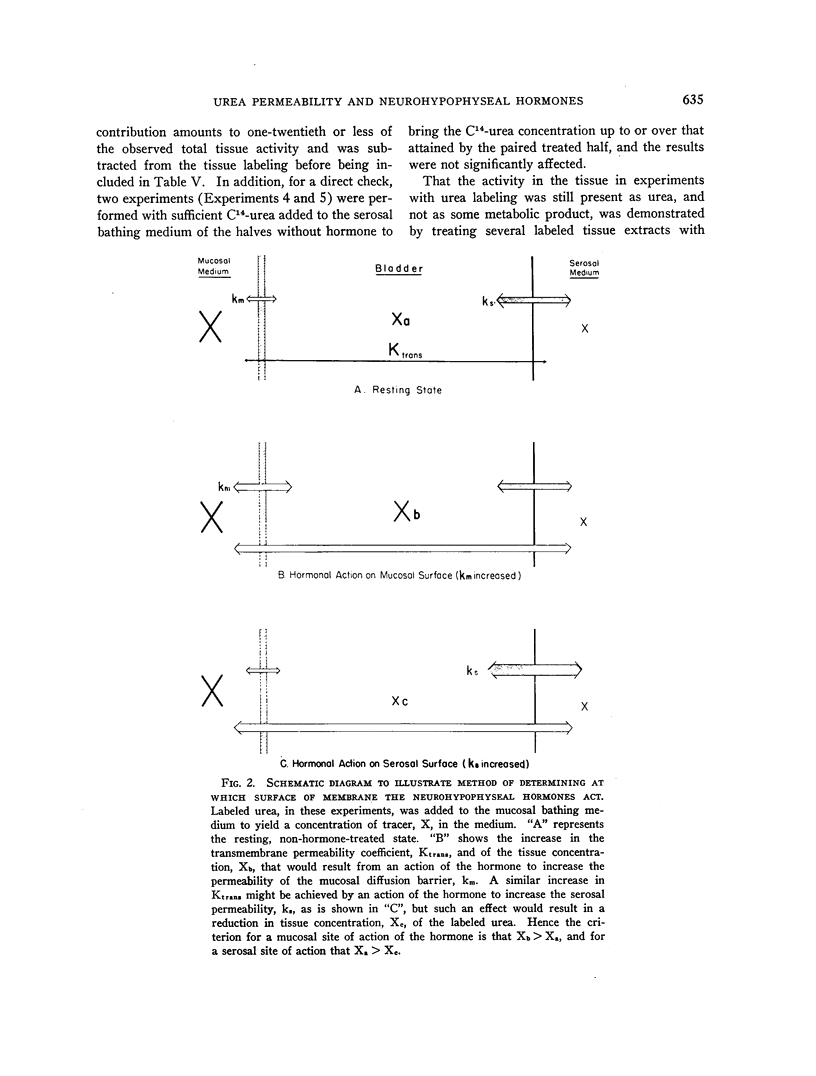
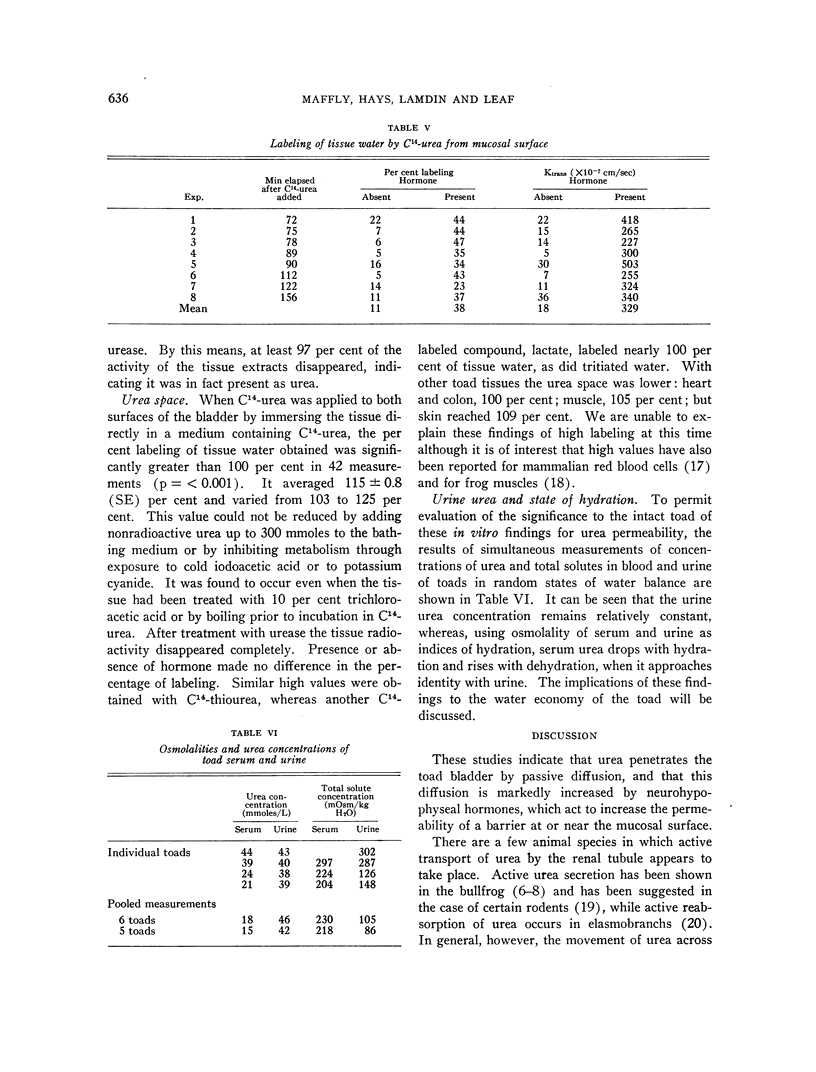
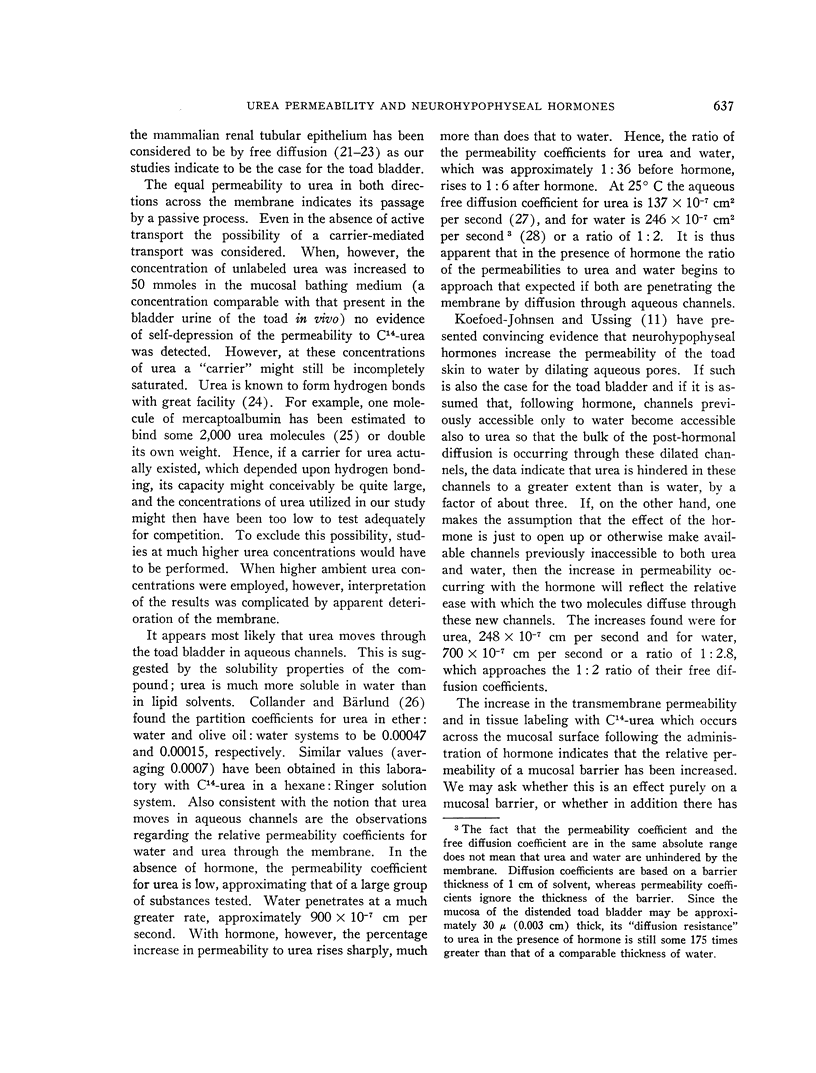
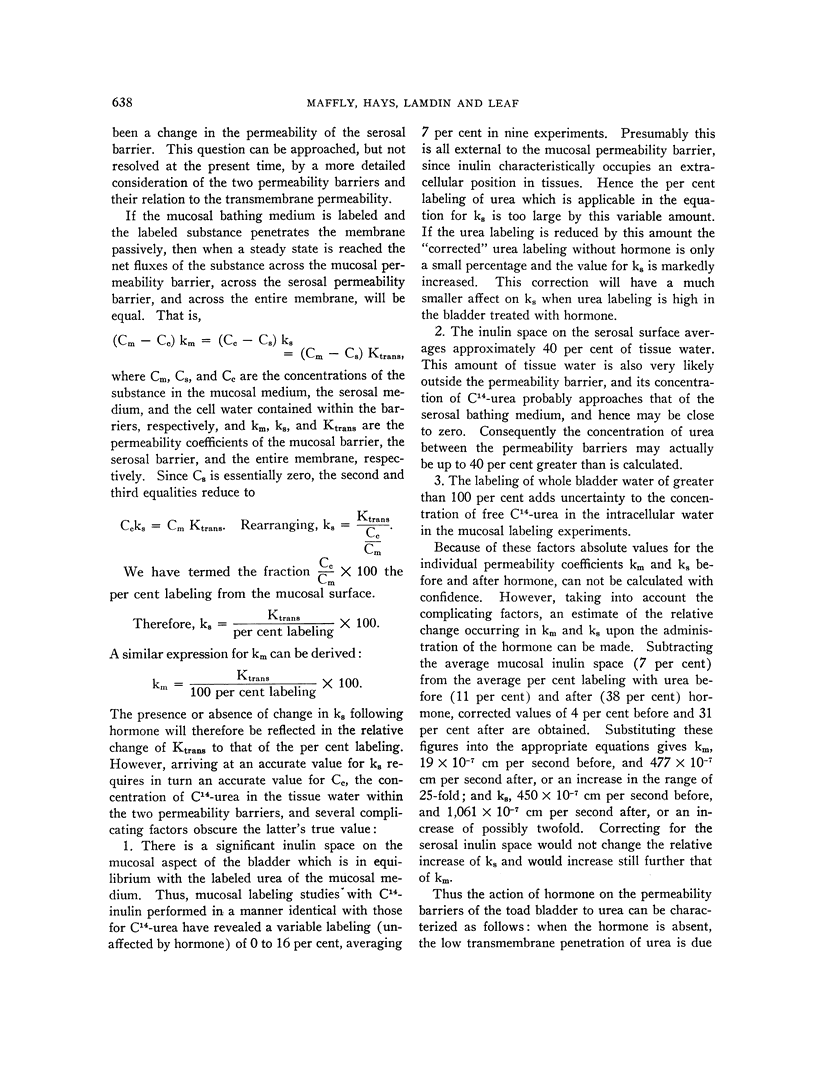
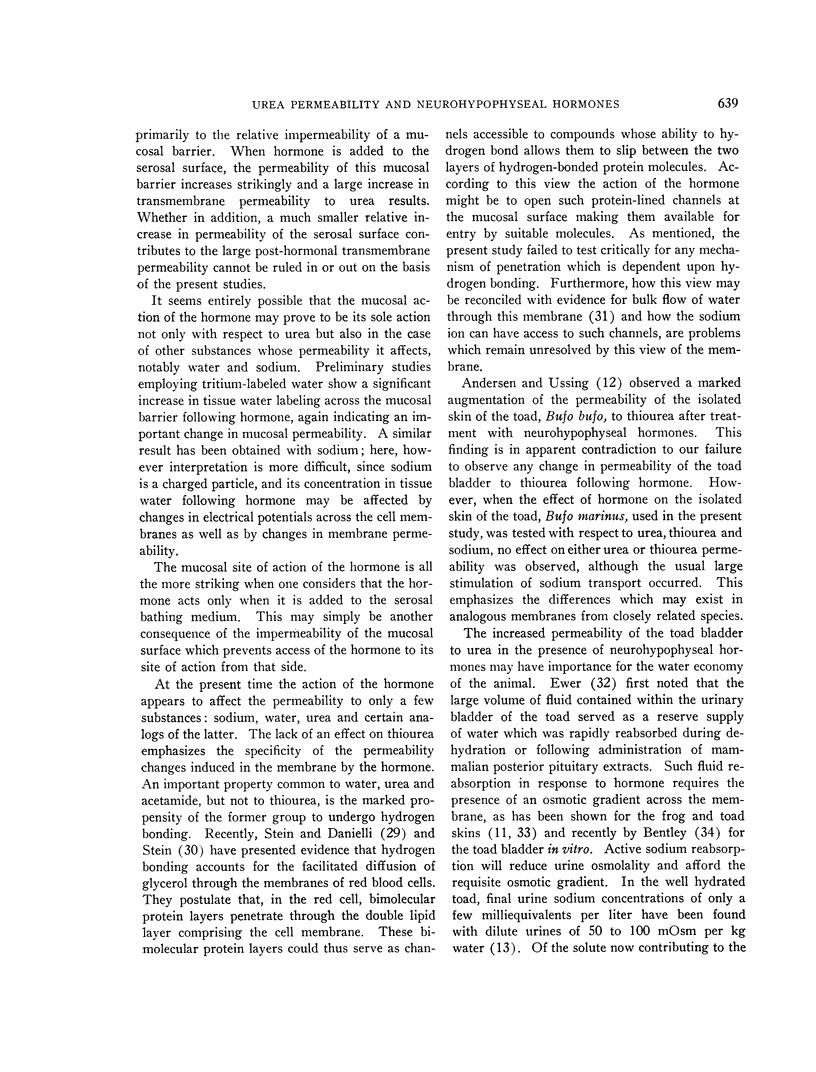
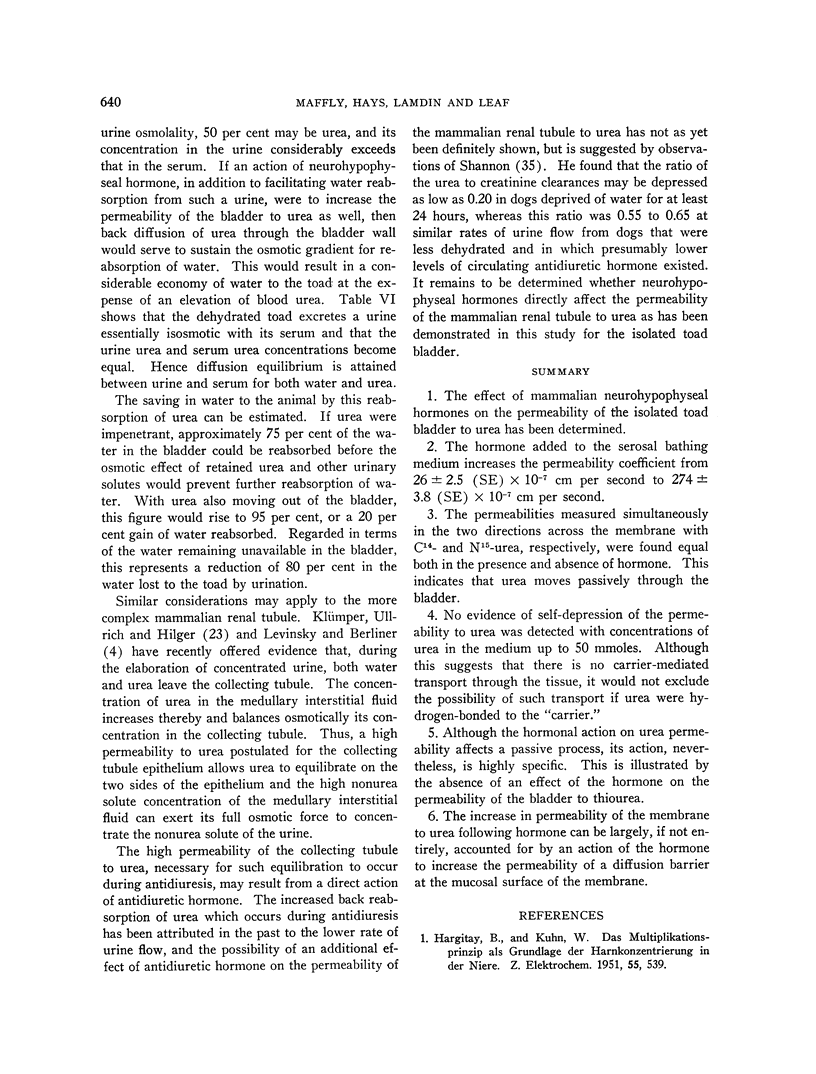
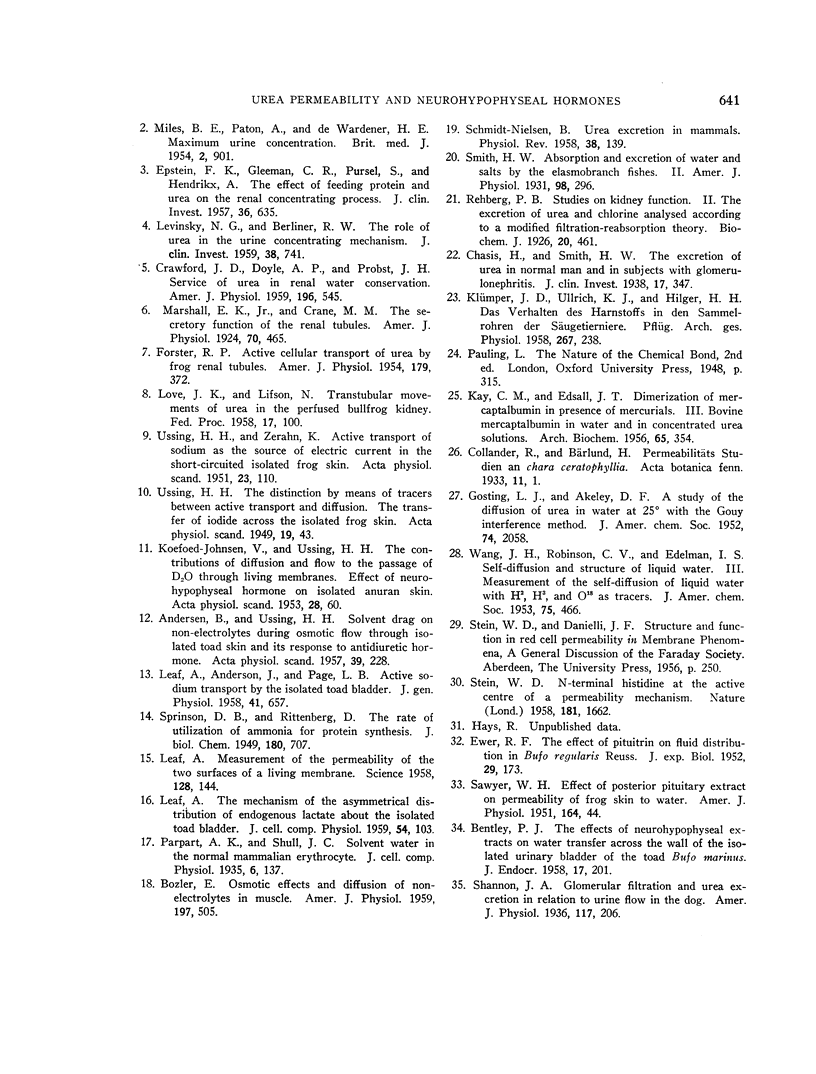
Images in this article
Selected References
These references are in PubMed. This may not be the complete list of references from this article.
- ANDERSEN B., USSING H. H. Solvent drag on non-electrolytes during osmotic flow through isolated toad skin and its response to antidiuretic hormone. Acta Physiol Scand. 1957 Jun 8;39(2-3):228–239. doi: 10.1111/j.1748-1716.1957.tb01425.x. [DOI] [PubMed] [Google Scholar]
- BENTLEY P. J. The effects of neurohypophysial extracts on the water transfer across the wall of the isolated urinary bladder of the toad Bufo marinus. J Endocrinol. 1958 Sep;17(3):201–209. doi: 10.1677/joe.0.0170201. [DOI] [PubMed] [Google Scholar]
- BOZLER E. Osmotic effects and diffusion of nonelectrolytes in muscle. Am J Physiol. 1959 Sep;197:505–510. doi: 10.1152/ajplegacy.1959.197.3.505. [DOI] [PubMed] [Google Scholar]
- CRAWFORD J. D., DOYLE A. P., PROBST J. H. Service of urea in renal water conservation. Am J Physiol. 1959 Mar;196(3):545–548. doi: 10.1152/ajplegacy.1959.196.3.545. [DOI] [PubMed] [Google Scholar]
- Chasis H., Smith H. W. THE EXCRETION OF UREA IN NORMAL MAN AND IN SUBJECTS WITH GLOMERULONEPHRITIS. J Clin Invest. 1938 May;17(3):347–358. doi: 10.1172/JCI100959. [DOI] [PMC free article] [PubMed] [Google Scholar]
- EDSALL J. T., KAY C. M. Dimerization of mercaptal bumin in presence of mercurials. III. Bovine mercaptalbumin in water and in concentrated urea solutions. Arch Biochem Biophys. 1956 Nov;65(1):354–399. doi: 10.1016/0003-9861(56)90200-4. [DOI] [PubMed] [Google Scholar]
- EPSTEIN F. H., KLEEMAN C. R., PURSEL S., HENDRIKX A. The effect of feeding protein and urea on the renal concentrating process. J Clin Invest. 1957 May;36(5):635–641. doi: 10.1172/JCI103463. [DOI] [PMC free article] [PubMed] [Google Scholar]
- FORSTER R. P. Active cellular transport of urea by frog renal tubules. Am J Physiol. 1954 Nov;179(2):372–377. doi: 10.1152/ajplegacy.1954.179.2.372. [DOI] [PubMed] [Google Scholar]
- KLUMPER J. D., ULLRICH K. J., HILGER H. H. Das Verhalten des Harnstoffs in den Sammelrohren der Säugetierniere. Pflugers Arch. 1958;267(3):238–243. doi: 10.1007/BF00362427. [DOI] [PubMed] [Google Scholar]
- KOEFOED-JOHNSEN V., USSING H. H. The contributions of diffusion and flow to the passage of D2O through living membranes; effect of neurohypophyseal hormone on isolated anuran skin. Acta Physiol Scand. 1953 Mar 31;28(1):60–76. doi: 10.1111/j.1748-1716.1953.tb00959.x. [DOI] [PubMed] [Google Scholar]
- LEAF A., ANDERSON J., PAGE L. B. Active sodium transport by the isolated toad bladder. J Gen Physiol. 1958 Mar 20;41(4):657–668. doi: 10.1085/jgp.41.4.657. [DOI] [PMC free article] [PubMed] [Google Scholar]
- LEAF A. Measurement of the permeability of the two surfaces of a living membrane. Science. 1958 Jul 18;128(3316):144–145. doi: 10.1126/science.128.3316.144. [DOI] [PubMed] [Google Scholar]
- LEAF A. The mechanism of the asymmetrical distribution of endogenous lactate about the isolated toad bladder. J Cell Comp Physiol. 1959 Aug;54:103–108. doi: 10.1002/jcp.1030540111. [DOI] [PubMed] [Google Scholar]
- LEVINSKY N. G., BERLINER R. W. The role of urea in the urine concentrating mechanism. J Clin Invest. 1959 May;38(5):741–748. doi: 10.1172/JCI103854. [DOI] [PMC free article] [PubMed] [Google Scholar]
- MILES B. E., PATON A., DE WARDENER H. E. Maximum urine concentration. Br Med J. 1954 Oct 16;2(4893):901–905. doi: 10.1136/bmj.2.4893.901. [DOI] [PMC free article] [PubMed] [Google Scholar]
- Rehberg P. B. Studies on Kidney Function: The Excretion of Urea and Chlorine Analysed according to a Modified Filtration-Reabsorption Theory. Biochem J. 1926;20(3):461–482. doi: 10.1042/bj0200461. [DOI] [PMC free article] [PubMed] [Google Scholar]
- SAWYER W. H. Effect of posterior pituitary extract on permeability of frog skin to water. Am J Physiol. 1951 Jan;164(1):44–48. doi: 10.1152/ajplegacy.1950.164.1.44. [DOI] [PubMed] [Google Scholar]
- SCHMIDT-NIELSEN B. Urea excretion in mammals. Physiol Rev. 1958 Apr;38(2):139–168. doi: 10.1152/physrev.1958.38.2.139. [DOI] [PubMed] [Google Scholar]
- STEIN W. D. N-terminal histidine at the active centre of a permeability mechanism. Nature. 1958 Jun 14;181(4624):1662–1663. doi: 10.1038/1811662b0. [DOI] [PubMed] [Google Scholar]
- USSING H. H., ZERAHN K. Active transport of sodium as the source of electric current in the short-circuited isolated frog skin. Acta Physiol Scand. 1951 Aug 25;23(2-3):110–127. doi: 10.1111/j.1748-1716.1951.tb00800.x. [DOI] [PubMed] [Google Scholar]





